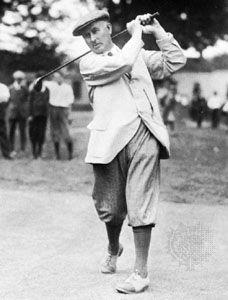Harry Vardon, the preeminent figure in the annals of golf history, left an enduring imprint upon the game through his pioneering techniques and indomitable spirit. This article embarks on a comprehensive exploration of Vardon’s golfing legacy, examining the transformative impact of his revolutionary approaches on the evolution of the sport. By delving into the intricacies of his remarkable techniques and their influence on subsequent generations of golfers, this analysis illuminates the profound significance of Vardon’s contributions to the golfing landscape.
Harry Vardons Innovative Swing: Mechanics and Biomechanics
Harry Vardon’s Innovative Swing: Mechanics and Biomechanics
Vardon’s swing was characterized by several key principles that set it apart from the techniques of his contemporaries. First, he used a relatively narrow stance, with his feet close together. This gave him greater stability and control over his swing plane. Second, he kept his head down and his eyes focused on the ball throughout the swing. This helped him to maintain a consistent contact point and to strike the ball squarely. Third, he made a full backswing, taking the club back smoothly and deliberately. This created a large amount of clubhead speed, which resulted in longer and more accurate shots.
In addition to these mechanical principles, Vardon also paid great attention to the biomechanics of his swing. He believed that the correct swing sequence was essential for generating power and accuracy. Vardon’s swing sequence can be described as follows:
- The takeaway: Vardon started his swing by taking the club back smoothly and deliberately. He kept his head down and his eyes focused on the ball, and he made sure to turn his hips and shoulders back together as he swung.
- The downswing: As Vardon started down, he shifted his weight slightly to his right foot and began to accelerate the clubhead. He kept his head down and his eyes focused on the ball, and he swung through the impact zone with power and precision.
- The follow-through: After impact, Vardon continued to swing the club through the ball with his left arm. He kept his head down and his eyes focused on the ball, and he finished his swing by extending his right arm and rotating his hips and shoulders fully.
Vardon’s innovative swing was a major factor in his success on the golf course. His techniques helped him to win six Open Championships and become one of the greatest golfers of all time. Vardon’s legacy continues to live on, as his swing principles are still used by golfers today.
The Vardon Grip: Enhancing Control and Accuracy
Harry Vardon’s legacy as a golfing innovator extends beyond his revolutionary swing technique to encompass his groundbreaking approach to grip. The Vardon Grip emerged from Vardon’s meticulous study of anatomy and biomechanics, and its principles continue to guide golfers seeking enhanced control and accuracy.
Central to the Vardon Grip is the position of the left hand, with the shafts of the middle finger and index finger forming a straight line perfectly parallel to the clubface. This alignment ensures the clubface stays square to the target throughout the swing, promoting consistency and minimizing the risk of misses caused by an open or closed clubface. Additionally, the right hand grip should be lightly wrapped over the left, facilitating a relaxed hold and preventing excessive gripping that can hinder proper swing mechanics.
The benefits of the Vardon Grip are multifaceted. By promoting a square clubface and reducing tension in the hands, it fosters greater accuracy. The straight line created by the fingers also enhances control, as it provides golfers with a stable and reliable reference point throughout the swing. Furthermore, the relaxed hold associated with the Vardon Grip reduces muscle fatigue, enabling golfers to maintain consistency even during extended rounds of play.
The Vardon Stance: Fostering Balance and Power
The Vardon stance, developed by the legendary Harry Vardon, is a fundamental technique that has stood the test of time. It involves a balanced and stable lower body position, with the feet slightly wider than shoulder-width apart, the knees flexed, and the hips slightly turned to the side. This stance promotes power generation by allowing the player to maintain a strong connection to the ground and create a solid base for the golf swing.
| Stance Factor | Benefits |
|---|---|
| Wide Feet Placement | Increases stability and balance |
| Flexed Knees | Allows for proper weight distribution and power generation |
| Hips Turned Sideways | Supports the weight transfer from backswing to downswing |
Additionally, the Vardon stance promotes accuracy and consistency in the golf swing. By maintaining a balanced position, golfers can better control the clubface throughout the swing, reducing the risk of mishits. Furthermore, consistent weight distribution allows for a more fluid and repeatable swing, leading to improved accuracy and control over the direction of the ball.
Vardons Contribution to Golf Course Design and Development
Vardon’s Contribution to Golf Course Design and Development
Vardon’s passion for golf extended beyond playing; he also made significant contributions to course design and development. As a highly skilled golfer, Vardon possessed an astute understanding of course strategy and playability. He actively engaged in designing and consulting on golf courses, leaving his mark on the sport’s landscape.
Vardon’s principles of golf course design emphasized providing a challenge for players of all abilities. He believed in creating courses with a variety of shot-making opportunities and strategic elements that encouraged thoughtful play and creativity. Vardon’s courses typically featured undulating greens, clever bunkering, and generous fairways that tested golfers’ skills without being overly penal.
One notable example of Vardon’s design prowess is the Westward Ho! Golf Club in Devon, England. Co-designed with his brother-in-law, James Braid, Westward Ho! has been consistently ranked among the top golf courses in the United Kingdom. The course’s rugged terrain, coastal location, and challenging layout have garnered widespread acclaim. Vardon’s contributions to golf course design continue to shape the modern game and provide enjoyable experiences for golfers around the world.
Outro
Harry Vardon’s indelible mark on the sport of golf reverberates throughout its history and present-day. His innovative techniques and strategic insights redefined the game, paving the way for its modernization and global appeal. From his groundbreaking swing and grip to his emphasis on accuracy and consistency, Vardon’s legacy continues to influence aspiring golfers worldwide. The depth and impact of his contributions warrant ongoing examination to fully appreciate the evolution of golf over the century since his prime. Furthermore, Vardon’s remarkable achievements and pioneering spirit serve as both an inspiration and a testament to the transformative power of innovation, dedication, and relentless pursuit of excellence in sport.





